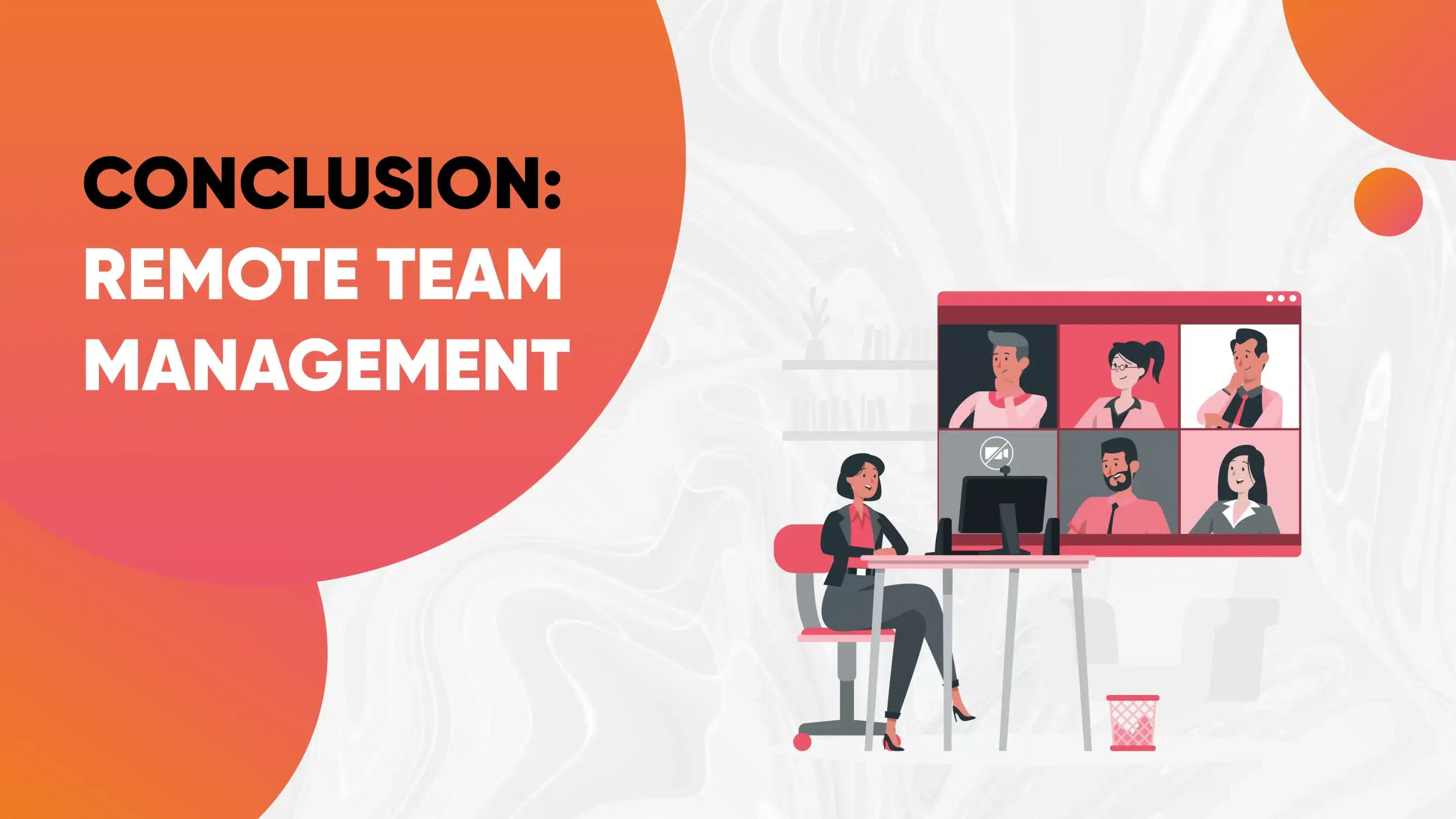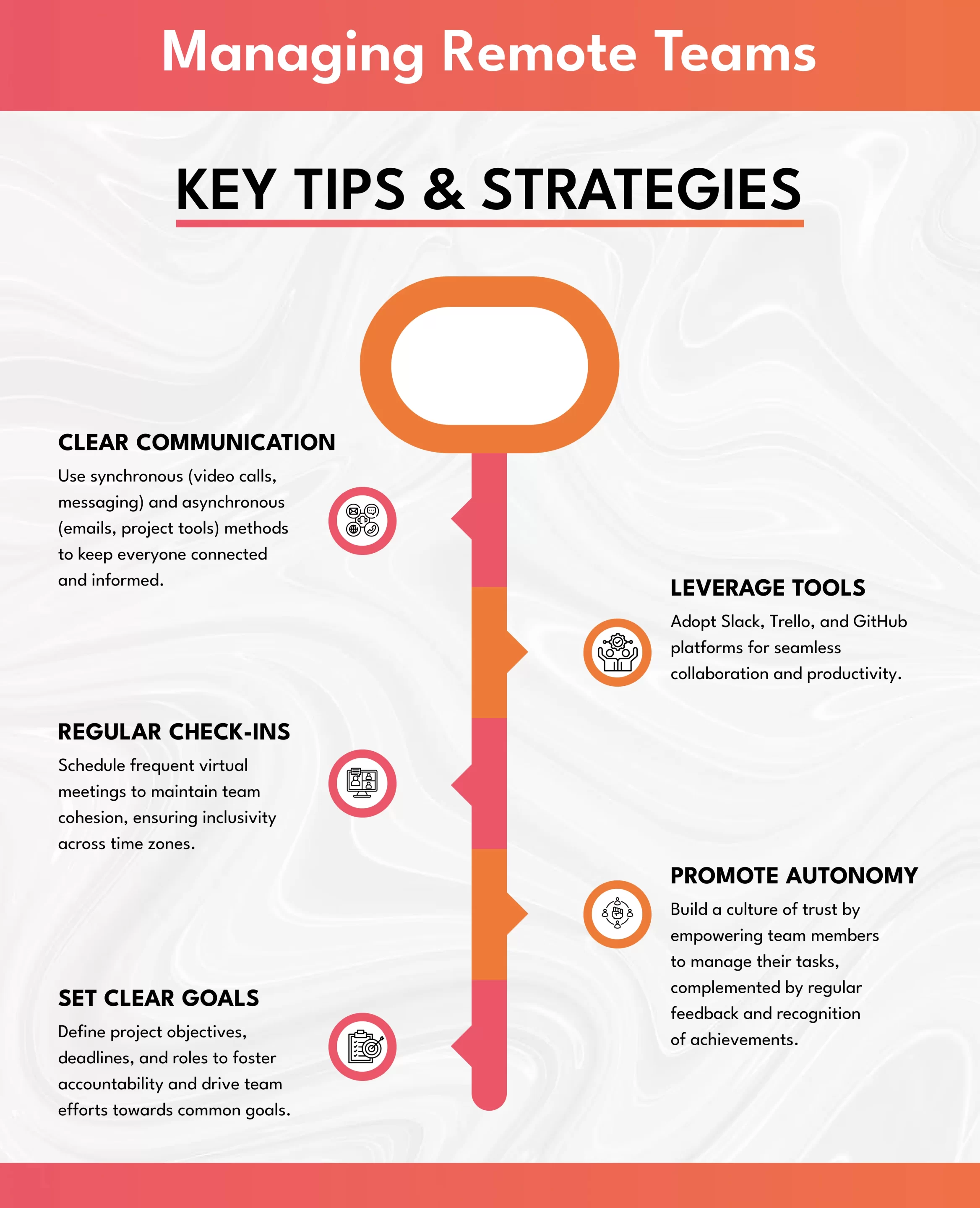In today’s globalized workforce, remote team management is prevalent, especially in industries like software development. Advanced communication technologies and distributed developer teams have reshaped the traditional office setup.
However, remote team management presents unique challenges and nuances.
Recent studies show that remote work has surged in recent years. A big part of the workforce now operates remotely. Moreover, according to a McKinsey report, 80% of Americans prefer flexible work-from-home opportunities.
What’s more? Companies are increasingly prioritizing profit optimization through remote teams. PR Newswire reports that 36% of businesses are eager to recruit fully remote workers from anywhere globally.
Remote work has clear benefits, like more flexibility and access to global talent. But, managing remote teams requires careful thought about many factors. These include communication, team dynamics, and technology.
In this blog post, we’ll cover the best practices for managing a remote development team well. We’ll cover key aspects such as communication, collaboration, and productivity.
These guidelines will help you. They are for both experienced and new remote team managers. You will be furnished with valuable advice for building and managing a successful remote development team.

What is Remote Team Management?
Navigating Remote Team Management
Title/Alt Text: What is Remote Team Management?
Before delving into remote Team Management strategies, it’s vital to grasp remote team dynamics. Remote teams span various time zones, cultures, and work environments. This diversity brings both opportunities and challenges.
When we think of a remote development team, we often picture professionals from different locations, time zones, and cultures working together. However, this isn’t always the case.
Some small software teams or outsourcing groups may have all members located in one country or city. The key difference is that they work remotely, without commuting to a physical office.
With members worldwide, remote teams offer diverse perspectives and round-the-clock productivity. Yet, managing them requires overcoming communication barriers and fostering cohesion. Moreover, effective management is crucial for Data security as well.
Recognizing these dynamics is key to successful remote team management. It enables tailored approaches for leveraging strengths and mitigating challenges. Understanding the complexities of managing a remote team helps organizations. It lets them create supportive, yet high-performing environments.

Optimizing Remote Team Performance: Essential Management Strategies
What are the Best Practices for Remote Team Management?
Title/Alt Text: “Optimizing Remote Team Performance: Essential Management Strategies”
Remote team management can be a boon with effective management, yet it might turn chaotic without proper attention. Hence, here are some essential best practices for managing remote teams.
-
Clear Communication Channels:
Establishing clear and efficient communication channels is paramount for remote team management. Utilize a combination of synchronous (e.g., video calls, instant messaging) and asynchronous (e.g., emails, project management tools).
They are communication methods to keep everyone connected and informed.
For example, GitLab, a notable software development platform, operates entirely remotely. They use a mix of asynchronous and synchronous communication. Through their internal tool Comms, team members share updates and collaborate asynchronously.
For synchronous communication, GitLab relies on video conferencing software like Zoom for meetings and stand-up calls.
-
Regular Check-ins for Remote Team Management:
Schedule regular check-ins and meetings to foster team cohesion and alignment. These sessions provide an opportunity to discuss project updates. Additionally, they are also used to address concerns and maintain team morale.
Also, consider rotating meeting times. This will help people in different time zones. It will ensure all team members can participate. Being mindful of time zone differences demonstrates inclusivity and respect for each team member’s schedule.
Moreover, encourage active participation and open communication during these meetings. This will further help in effective remote team management.
-
Set Clear Goals and Expectations:
Clearly defining project goals, deadlines, and individual responsibilities is essential for remote team success. Remote team management requires a clear understanding. Workers need to know what is expected from them and how their work fits into broader objectives.
This clarity fosters accountability and ensures everyone is working towards the same goals. Also, giving regular updates and feedback on progress toward these goals helps motivate remote team members. It also keeps them engaged.
Effective goal setting and communication of expectations are fundamental for remote team cohesion and productivity.
-
Remote team management relies on collaborative tools:
Use tools and platforms to work together. They will streamline workflows and make collaboration easier. Platforms like Slack, Trello, and GitHub enable real-time collaboration. Utilize these tools to access control and task tracking. These features enhance team productivity.
For instance, The company behind WordPress, Automattic, is another leading example of a successful remote-first organization. They heavily rely on collaborative tools to keep their geographically dispersed teams connected and productive.
Tools like Slack enable real-time communication. Trello helps with project and task management. Phabricator streamlines code reviews.
-
Promote Autonomy and Trust:
Effective remote team management requires a positive environment. Empower remote team members by fostering a culture of autonomy and trust. Provide individuals with the freedom to manage their schedules and tasks, trusting them to deliver results independently.
Regular feedback and recognition further reinforce trust within the team. Also, recognizing and celebrating achievements is key. These can be big or small. They create a positive work culture and motivate team members.
Furthermore, this motivates them to keep striving for excellence.

Efficient Strategies for Remote Software Development Team Management
How to Manage a Software Development Team Remotely?
Title/Alt Text: “Efficient Strategies for Remote Software Development Team Management”
Hiring Software development teams has become easy. However, Software development teams require specialized management approaches due to the nature of their work. Here are some additional best practices for managing software development teams remotely:
-
Establish Coding Standards for Remote Team Management:
Define coding standards, best practices, and guidelines to ensure consistency and maintain code quality across distributed teams. Encourage peer code reviews and collaboration to uphold coding standards effectively.
For Example: Let’s say your Django team is building a new feature for an e-commerce platform. You can set a coding standard. It mandates that all developers use consistent practices.
These include indentation, naming conventions (e.g., camel Case for variables), and commenting.
This ensures code readability and maintainability, especially for a geographically dispersed team. GitHub is a popular version control system. Many developers use it. It offers built-in features to enforce coding standards. It does this through automatic code reviews.
-
Implement Agile Methodologies:
Adopt agile methodologies like Scrum or Kanban. They help with iterative development, continuous integration, and regular feedback cycles. Agile frameworks promote adaptability, transparency, and collaboration. They are well-suited for remote software teams.
For Instance: A remote development team working on a new fitness app might adopt a Scrum methodology. Scrum uses short development cycles called “sprints” (e.g., 2 weeks) where a set of features are prioritized and completed.
Daily stand-up meetings using video conferencing tools keep everyone on the same page and identify roadblocks early. At the end of each sprint, the team reviews progress, gathers feedback, and adjusts priorities for the next sprint.
This iterative approach allows for flexibility and adaptation in a remote setting.
-
Provide Access to Resources and Support:
Ensure remote developers have access to necessary resources, tools, and technical support to perform their roles effectively. Invest in strong infrastructure. Also, invest in training programs and knowledge-sharing platforms.
They will empower developers and help develop their skills. This support helps in successful remote team management.
For Example, A team of developers scattered worldwide is building an open-source educational software program. The team provides all developers with powerful laptops. They also get access to cloud dev environments.
This ensures everyone has the necessary tools to contribute code, regardless of their physical location. In addition, the team makes a special online forum. There, developers can share best practices, solve issues together, and learn from each other’s expertise.

Conclusion:
To excel at managing remote development teams, use effective communication. Also, use collaborative tools and customized management strategies. By adopting these best practices, organizations can conquer the hurdles of remote team management.
Consider consulting an IT staff company to navigate challenges effectively and streamline operations for maximum efficiency. Leverage the flexibility and scalability of remote teams to gain a competitive edge in the evolving business landscape.

Key Tips & Strategies
Frequently Asked Questions (FAQs)
What is remote team management?
Remote team management involves overseeing a team of individuals. These developer teams work from different locations. Managing developers remotely requires the use of digital communication tools to collaborate and complete tasks.
Are remote teams more efficient?
Remote teams can be more efficient due to reduced commute times, flexible work schedules, and access to a global talent pool. However, efficiency depends on effective communication and good remote team management practices.
How do I hire a remote team?
To hire a remote team, identify your project needs and use reputable online platforms or agencies to find candidates. Further, conduct thorough interviews and assessments to ensure they align with your goals and culture.
How do you manage remote teams effectively?
Effective management of remote teams starts with establishing clear communication channels and setting realistic goals and expectations. Additionally, follow all the Managing remote teams best practices to ensure effective remote team management.
What are the benefits of managing remote teams?
Remote team management offers benefits such as increased flexibility for employees and access to a wider talent pool. It also cuts overhead costs for businesses. Moreover, improves work-life balance and may raise employee satisfaction.








